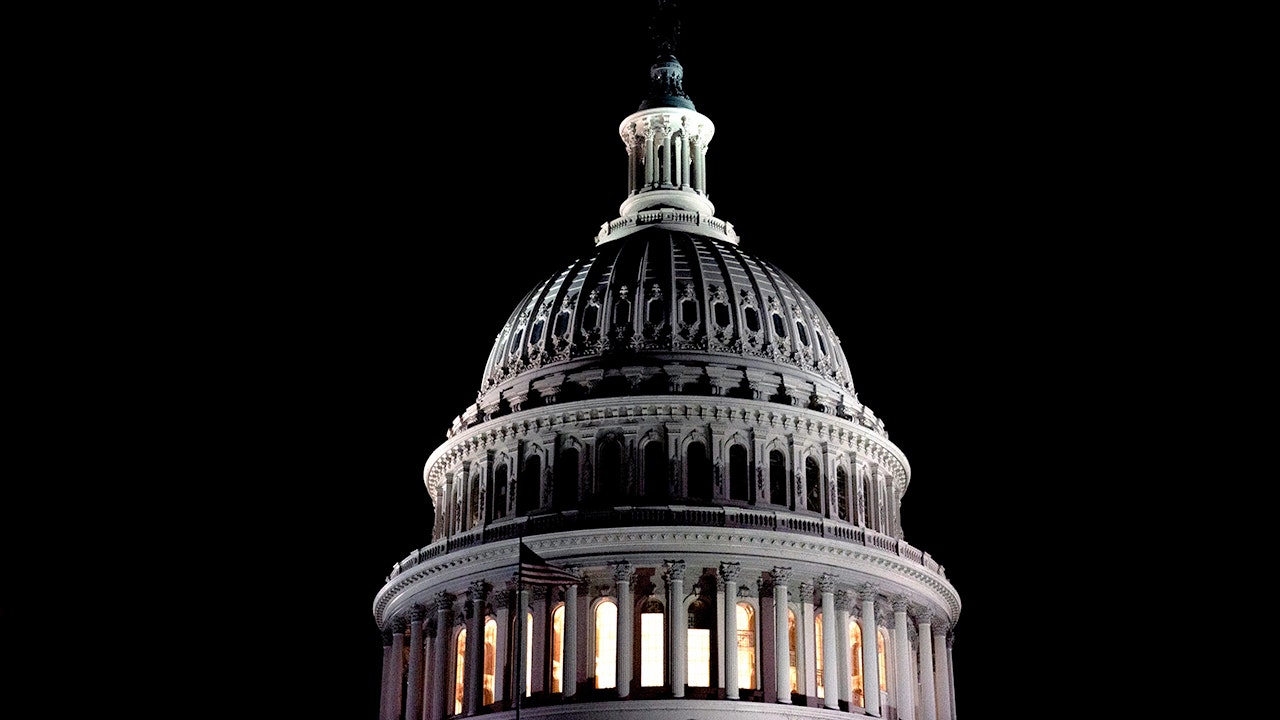Michigan
University of Michigan slithers toward history with acquisition of snake specimens

ANN ARBOR, Mich. — Greg Schneider scans rows upon rows of liquid-filled glass jars containing coiled snake specimens, just a portion of the University of Michigan Museum of Zoology’s reptile and amphibian collection believed to be the largest held by any research institution in the U.S. thanks to a recent donation.
The museum this fall acquired tens of thousands of reptile and amphibian specimens from Oregon State University, many of which are snakes. The development places the university in a unique position, according to Schneider, the research museum collections manager for the museum’s division of reptiles and amphibians.
“I’m fairly confident we’ll have the largest snake collection in the world,” he said. The extensive new additions also will allow scientists to conduct new snake and amphibian research, perhaps looking at trait evolution in mothers and their offspring.
Numerous studies have been conducted in recent years about declining amphibian and reptile populations, Schneider said, noting they “are very good biological indicators of the health of the environment and ecosystems,” especially the amphibians.
“Amphibians, unlike people, breathe at least partly through their skin, which is constantly exposed to everything in their environment,” he said, adding that “the worldwide occurrences of amphibian declines and deformities could be an early warning that some of our ecosystems, even seemingly pristine ones, are seriously out of balance.”
Boxes containing water snakes, garter snakes, woodland salamanders, dusky salamanders and other species arrived last month. They were euthanized and ultimately placed in a solution that is 75% ethanol. The donations represent the lifetime work of two retired Oregon State professors, Lynne Houck and Stevan Arnold, who received a doctorate from Michigan in 1972.
Schneider has yet to complete the painstaking process of cataloging the new material, but estimates it contains around 30,000 snakes. He said that would give Michigan a total of between 65,000 to 70,000 of the slithering vertebrates, surpassing collections at the Smithsonian in Washington, the American Museum of Natural History in New York and the University of Kansas. Some of the specimens housed at the museum prior to the Oregon State donation predate the Civil War.
The “largest snake collection” title would be nice, but Schneider said the true promise of a big collection is new research opportunities.
“The more stuff you have and the more associated materials that you have, the more things you can do,” Schneider said.
The newly acquired Oregon State collection also includes about 30,000 associated frozen tissue samples. Along with advances in molecular genetics and more sophisticated DNA analyses, the samples will allow research that could result in a better understanding of inheritance, evolutionary relationships and “has huge applications in medicine,” said Hernán López-Fernández, an associate professor in Michigan’s Department of Ecology and Evolutionary Biology.
A number of the newly acquired jars contain both snakes and litters of their newborns, which Michigan professor Dan Rabosky said “is very, very rare for museum collections and is incredibly powerful for research, because it lets researchers ask questions about genetics that would otherwise not be possible.”
Despite the daunting task of organizing the new collection, Schneider said he and his colleagues have noticed renewed excitement in team members who staff the university’s 153,375-square-foot (14,249-square-meter) Research Museums Center, where the specimens are housed.
“Since these specimens arrived, people are very, very, very enthusiastic and supportive,” Schneider said. “And excited about the kinds of research that are going to be done with these collections.”

Michigan
Howard’s double-overtime goal lifts Michigan State to thrilling win over Ohio State, second straight Big Ten playoff championship – College Hockey | USCHO.com

EAST LANSING, Mich. — With less than 10 minutes to play in the Big Ten championship game at Munn Ice Arena, Michigan State watched a two-goal lead evaporate.
Two periods later, the Spartans became the first team in Big Ten conference history to secure consecutive playoff championships coupled with back-to-back regular-season titles.
Isaac Howard capped an impressive performance with the game-winning goal at 15:09 of double overtime, giving Michigan State a 4-3 win over Ohio State. Howard had a power-play goal in the first period and assisted on the Spartans’ two other goals as well, earning him MVP honors for the game.
“Ike’s fingerprints were all over this game,” said Michigan State coach Adam Nightingale. “I have a hard time believing there’s a better player in the country. He’s doing it on both sides of the puck. We used him on the kill but to score that goal [on a] heck of a play by Charlie Stramel to find him.
“It was great to see guys be rewarded, to try to do something that’s never been done … super proud of the guys.”
The Spartans led 2-0 early in the game on power-play goals by Karsen Dorwart and Howard, who assisted on each other’s tallies. Joe Dunlap got one back for the Buckeyes late in the first to make it 2-1 after one.
After a scoreless second period, the Spartans took a 3-1 lead just 42 seconds into the third period when Tanner Kelly tipped in a feed from Howard on the breakaway and for more than 10 minutes, it looked as though the game would that way.
But at 12:46, Damien Carfagna banked in a goal off of Trey Augustine’s skate to pull the Buckeyes to within one, and at 17:39, Gunnarwolfe Fontaine picked up Riley Thompson’s rebound to the game 3-3.
“When your backs are against the wall, you have no choice,” said Ohio State coach Steve Rohlik. “Our guys, we’re just going to keep going forward. To get that second one was huge and then we just felt it. We wished that period was a little longer. We were kind of in the roll there.”
The Buckeyes outshot the Spartans 11-9 in the first overtime, but the second OT belonged to Michigan State from nearly the get-go. The Spartans wore down the Buckeyes in the second OT, outshooting Ohio State 12-4. Even when the Buckeyes were able to clear the puck out of their own zone, they couldn’t sustain any offense and by the time Howard scored, the game winner felt like an inevitability.
On that goal, Stramel swept the puck from behind the Ohio State net and set up Howard in the slot. Once the puck was on his tape, the Big Ten player of the year and Hobey Baker finalist made no mistake.
“I remember kind of getting in the slot and ‘Strams’ was wheeling up and he made a great play to me,” Howard said. “I just went backhand, forehand, through the goalie’s armpit and then celebrated.”
Nightingale said that he was happy with the way his team “just stayed with it” when the Buckeyes evened the score and had their chances in overtime.
“There was no panic,” said Nightingale. “A lot of time that happens, the wheels can fall off. You’ve just got to believe in what we do and how we need to play to be a good hockey team.”
Both Ohio State (24-13-2) and Michigan State (26-6-4) will move onto NCAA tournament play, with the Spartans earning a No. 1 seed in regional action, wherever they’re sent. The Buckeyes and Spartans may find themselves placed in Toledo next weekend.
Michigan
How to watch #5 Michigan vs. #4 Texas A&M NCAA 2nd round: Time, channel, live streams

The 4th-seeded Texas A&M Aggies clash with the No. 5 Michigan Wolverines on Saturday for a shot at the NCAA Tournament’s Sweet 16. The game is scheduled to start at 5:15 p.m. ET (3:15 p.m. MT) with TV coverage on CBS and streaming on-demand.
- How to watch March Madness 2025: Live streams of the Michigan vs. Texas A&M game are available with offers from FuboTV (free trial) and DirecTV Stream (free trial).
- The game will also stream live on Paramount+ With SHOWTIME Plan (free trial). The plan costs $12.99/month after free trial ends.
#4 Texas A&M Aggies (23-10) vs. #5 Michigan Wolverines (26-9)
NCAA Tournament 2nd round matchup at a glance
When: Saturday, March 22 at 5:15 p.m. ET (3:15 p.m. MT)
Where: Ball Arena, Denver, Colo.
TV channel: CBS
Live streams: FuboTV (free trial) | DirecTV Stream (free trial) | Paramount+ With SHOWTIME (free trial)
The Aggies enter Saturday’s second-round matchup as 2.5-point favorites to reach the Sweet 16 after dispatching a tough No. 13 Yale team (80-71) in Thursday’s first round. Texas A&M shot 51.7 percent from the floor to atone for subpar marks from 3-point range (24.0%) and the free throw line (57.1%) in a matchup they controlled for many of the 40 minutes.
Michigan had to work a little harder in its 68-65 win over No. 12 UC San Diego in the first round after limping through the second half. The Tritons overcame a 41-27 halftime deficit and took a 65-63 lead with 2:29 remaining, but the Wolverines made a key 3-pointer on their next possession and held off a late comeback bid to advance.
Michigan Wolverines vs. Texas A&M Aggies: Know your live streaming options
- FuboTV (free trial) – excellent viewer experience with huge library of live sports content; free trial lengths vary; monthly rate after free trial starts at $79.99.
- DirecTV Stream (free trial) – not the same level of viewer experience as FuboTV, but the standard 7-day free trial is still the longest in streaming.
- Paramount+ With Showtime (free trial) – Free trial is for a full week; The Paramount+ With Showtime plan features 24/7 access to your local CBS channel, along with SHOWTIME originals and movies, and downloadable movies and shows.
The Aggies and Wolverines are set for a 5:15 p.m. ET start on CBS. Live streams are available from FuboTV (free trial) and DirecTV Stream (free trial). The game will also stream on Paramount+ With SHOWTIME (free trial).
Michigan
Michigan State basketball proves it can stay cool, calm after stressful start

Video, Bryant and Michigan State fans set for Cleveland March Madness
Bryant and Michigan State basketball fans get ready for the Bulldogs and Spartans to play a first-round March Madness game Friday in Cleveland.
- Michigan State, a No. 2 seed in the NCAA tournament, overcame a slow start to defeat Bryant 87-62.
- Sophomore forward Coen Carr led the Spartans with 18 points and several highlight-reel dunks.
- Carr’s performance was crucial in countering Bryant’s athleticism and preventing an early upset.
CLEVELAND — For a while, it looked like it might be one of those games.
Tom Izzo knows them well. The underdog comes out with its hair on fire. An uppercut here. A body blow there.
A couple 3-pointers. A few blocks. And halfway through the first half, the underdog has the lead, as Bryant did over Michigan State.
Remember when MSU began the NCAA tournament as a No. 2 seed in 2016?
Of course you do. And for a moment, the Middle Tennessee vibes were pulsating.
It had been a minute since the Spartans entered the postseason with such a high seed, and with this much expectation. It feels different.
And it felt different here at Rocket Arena.
MSU showed its nerves — and its youth — in particular spots.
The Spartans were amped to start — overamped, truthfully — and when Jase Richardson barely hit the rim on his first two shots, you could see the freshman guard was struggling to catch his breath.
Bryant scored the first five points. The Spartans missed their first four shots — and their first free throw. It wasn’t until Jaden Akins, the senior, got to the free throw line that Spartans scored.
He followed with a 3-pointer. And as he ran down the court, he pushed his palms down near MSU’s bench, motioning everyone to calm down, that everything would be fine.
Eventually, it was, as MSU beat Bryant, 87-62, to advance to the second round, where it will play New Mexico here Sunday.
Pushed around?
“I thought we got pushed around a little bit in the first half,” Izzo said. “And maybe that was me. I don’t know. But we did a better job the second half.”
Punched in the mouth, he called it. And for a coach who has built his program to take the swings, it was hard to watch the beginning.
Then Akins hit the shot to settle things. From there, Coen Carr catapulted the Spartans. The sophomore forward played the game of his life. He ran the floor, as he always does, and dunked. He rebounded, too. Mostly, he supercharged MSU.
“It was infectious,” Izzo said.
Not to mention critical.
Bryant is long on the perimeter and tough everywhere. And unlike so many teams reluctant to crash the offensive glass because of the Spartans’ lethal fastbreak, the Bulldogs were fearless there, too.
their athleticism may not have surprised the Spartans, but it bothered them — especially early — and forced the Spartans to swarm the defensive glass as well, keeping them from running.
Points were a struggle early — except for Carr, who finished with a game-high 18.
He hit a pull-up from the left elbow midway through the first half. On the next possession, he laid it up after a balletic spin. And when he got to the free throw line after getting the chance at a three-point play, he knocked it down — a relief, considering his normally reliable teammates were misfiring from the line.
Twice, he soared in for offensive rebounds. Each time, he rose up and dunked the putbacks off two feet, single-handedly keeping the upset vibes at bay.
“I wasn’t going to let my team lose today,” Carr said. “I just tried to play as hard as I can, tried to get every rebound I can and just make the most of my opportunities out there.”
He started the second half in place of Szymon Zapala, only coming out to take a brief rest. It was his game. His athleticism countered the Spartans’ 15th-seeded opponent. Or at least helped to match it.
His game was made for the matchup — and for the moment.
Because he doesn’t live on the perimeter, where nerves can get in the way, he was free to unleash his otherworldly hops and quickness.
Izzo has been waiting for him to attack the boards like this, and to play defense like this.
“Coen ignited us on offense, especially when things (weren’t) going our way,” teammate Jeremy Fears Jr. said. “He was a big piece in getting this win today and helping us pull away.”
Not, technically, his first rodeo
This was not Carr’s first time under the NCAA tournament spotlight.
But he didn’t get this kind of run a year ago as MSU fell in the second round. He took advantage of the opportunity.
Where Richardson and Fears, and even Jaxon Kohler, took a bit to find their footing — and slow their heart rates — Carr channeled his extra juice into a season-saving night. Kohler was so nervous and jacked up, he couldn’t find his rebounding rhythm — or his normal feel for the ball on the block.
As for Carson Cooper?
Izzo didn’t lean on him early, then spent time kneeling next to him on the bench. Bryant’s front line outmuscled and outmaneuvered MSU’s bigs. Kohler and Cooper knew it was coming, but needed a minute to adjust.
Carr gave them those minutes to figure things out.
Maybe they win without his breakout turn, but not likely.
Izzo refused to acknowledge his team walked off the floor with more teachable moments. He wants his team to be past that by now.
It’s tournament time. The “my bad” excuse doesn’t work this time of year, as he likes to say.
“There should be no eye openers, I don’t think,” Izzo said. “We’ll talk about that tonight when we get back (to the hotel). It wasn’t looking real good there, and I think if (Bryant) would have kept close, (with) the way those three guys could shoot it, I wouldn’t have liked for that thing to come down to the nitty-gritty, and I think our team will learn that.”
He wanted a better, cleaner start — and who can blame him?
His team may not have overwhelming talent, but it has thrived all season within its relatively small margin for error. Look at the way these Spartans closed the Big Ten regular season.
“We know what it’s like to show up every night, and we’ll have to do better,” he said.
To make a run, they’ll have to.
To make a run, they’ll have to survive the occasional fits and spurts — and to do that, someone will have to lift the group. Carr did that Friday night, making sure MSU’s postseason didn’t end almost as soon as it started.
This is how it has been for these Spartans all season: If one side of the floor gets a little sticky, someone on the other side gasses it.
Sunday, against New Mexico, it may be someone else. Or it may be someone else and Carr again.
Because what he did, he can duplicate.
Energy is like that — and he is proving to have an unlimited supply.
Contact Shawn Windsor: swindsor@freepress.com. Follow him @shawnwindsor.
-

 Midwest1 week ago
Midwest1 week agoOhio college 'illegally forcing students' to share bathrooms with opposite sex: watchdog
-

 News1 week ago
News1 week agoJudges threatened with impeachment, bombs for ruling against Trump agenda
-

 News1 week ago
News1 week agoVideo: Researchers Find Shipwreck Lost Since 1892
-

 Politics1 week ago
Politics1 week agoBarely: House GOP passes government funding bill without help from Democrats
-

 World1 week ago
World1 week agoRussia, China call on US to drop Iran sanctions, restart nuclear talks
-

 Politics1 week ago
Politics1 week agoAll illegal migrants held in Guantanamo Bay, Cuba have been sent to Louisiana
-

 News1 week ago
News1 week agoFor Canadians Visiting Myrtle Beach, Trump Policies Make the Vibe Chillier
-

 News1 week ago
News1 week agoArlington National Cemetery stops highlighting some historical figures on its website


















